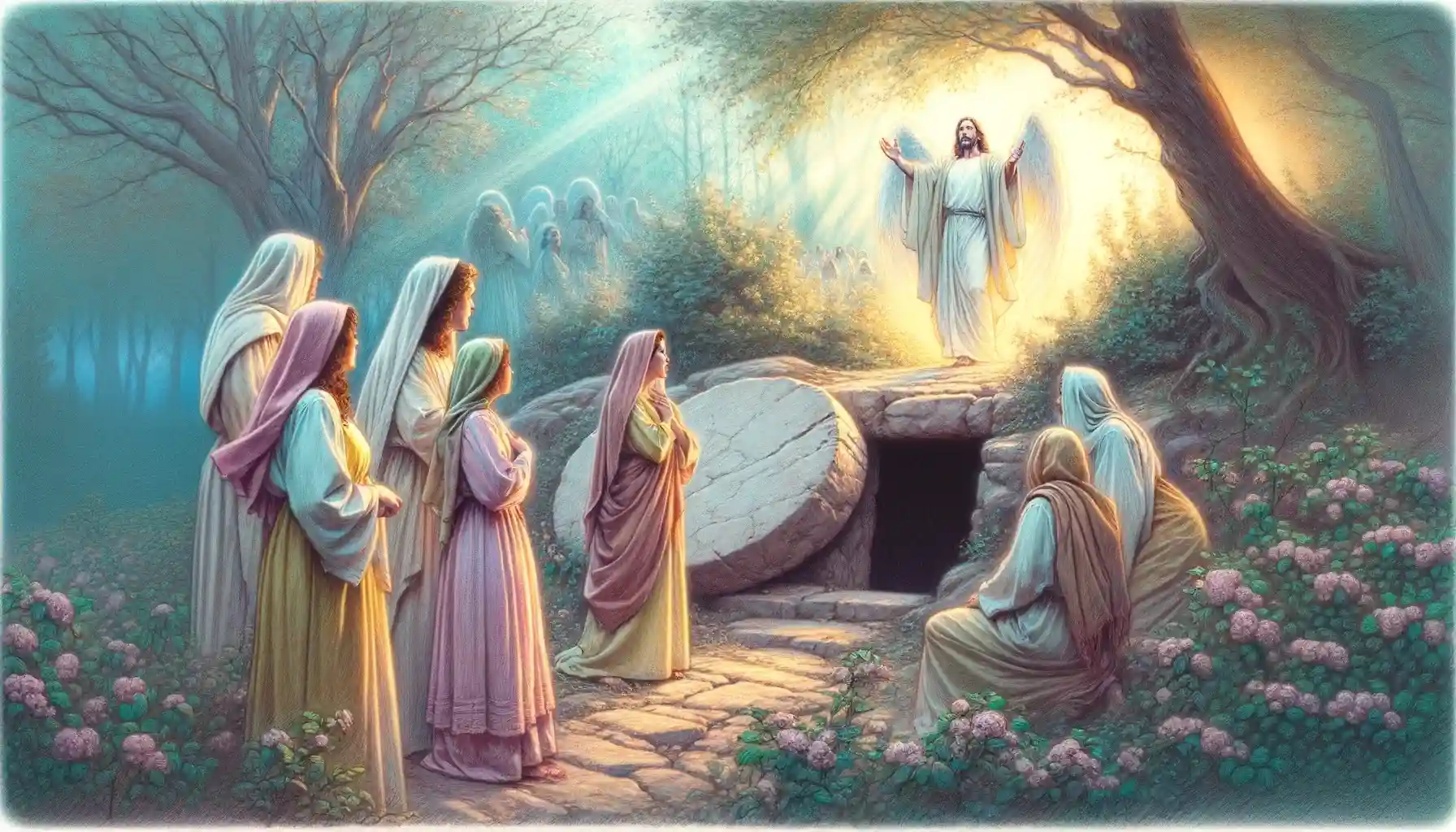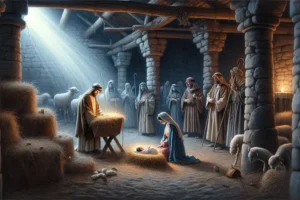
The Resurrection of Jesus
- Categories Events of Jesus
- Comments 0 comment
The Resurrection of Jesus is a fundamental event in Christian theology, narrated in Luke 24:1-12, where Jesus Christ’s resurrection from the dead is discovered by a group of women at his tomb.
- Discovery by the Women: Early on the first day of the week, several women, including Mary Magdalene, Joanna, Mary the mother of James, and others, visit Jesus’ tomb to anoint his body with spices.
- Empty Tomb: Upon arriving, they find the stone rolled away from the tomb but do not find Jesus’ body inside.
- Angelic Revelation: Two men in dazzling clothes suddenly stand beside them in the tomb; the women are frightened and bow their faces to the ground. The men, identified as angels, ask why they seek the living among the dead.
- Proclamation of the Angels: The angels remind the women that Jesus had predicted his own suffering, death, and resurrection. They declare, “He is not here, but has risen.”
- Return to the Disciples: The women return from the tomb and report all these things to the eleven disciples and all the rest.
- Initial Unbelief: The apostles do not believe the women at first, dismissing their story as an idle tale.
- Peter’s Investigation: Peter, however, runs to the tomb to see for himself. Upon arriving, he sees the linen cloths by themselves and goes home, marveling at what had happened.
Contextual Background
The narrative of Jesus’ Resurrection in Luke 24:1-12 occurs after the crucifixion and burial of Jesus, events that left His followers devastated and confused. This passage marks the beginning of the final chapter of Luke’s Gospel, which details the discovery of the empty tomb and is pivotal in Christian theology as it affirms the victory of Jesus over death.
Theological Insights
- Role of Women as Witnesses: Luke’s account is significant for highlighting the role of women as the first witnesses to the Resurrection. In the cultural context of the time, women’s testimonies were often not valued highly in legal and social settings, making this an extraordinary choice by Luke to emphasize their primary role in witnessing and proclaiming the Resurrection. This choice underscores a theme in Luke’s Gospel of elevating the roles of those whom society might overlook or marginalize.
- Angel’s Message: The appearance of angels at the tomb to explain Jesus’ absence reflects a common biblical motif of divine messengers interpreting significant events. Their message, “Why do you look for the living among the dead? He is not here; he has risen!” is a profound theological statement affirming the Christian belief in resurrection, not just as a future hope but as a present reality through Jesus.
- Memory and Fulfillment of Prophecy: The angels remind the women of Jesus’ predictions regarding His own death and resurrection (Luke 9:22, 18:31-33). This appeal to memory serves to validate Jesus’ prophetic identity and His reliability as one who fulfills God’s promises. It emphasizes the continuity and consistency of God’s plan as revealed throughout Jesus’ ministry.
- Response of the Disciples: The disciples’ initial skepticism upon hearing the women’s report reflects a naturalistic and human reaction to a claim of resurrection, underscoring the extraordinary nature of the event. Peter’s personal investigation into the matter, leading to his amazement, highlights a journey from doubt to faith that is thematic in the resurrection narratives across the Gospels.
Historical and Cultural Implications
- Historicity and Skepticism: The historical debate about the Resurrection includes discussions on the reliability of eyewitness accounts, the role of women as primary witnesses, and the implications of these accounts for understanding the early Christian community. Skepticism from within the narrative itself may serve to address and pre-emptively counteract the doubts of Luke’s audience.
- Transformation of Early Christian Beliefs: The Resurrection account is foundational for Christian doctrine as it signifies the defeat of death and the promise of eternal life. This event transformed the despair of Jesus’ followers into a vibrant faith that propelled the spread of Christianity throughout the Roman Empire.
Conclusion
The account of the Resurrection in Luke 24:1-12 is more than a miraculous event; it is a carefully constructed narrative that offers deep theological insights and addresses both the hopes and the doubts of the early Christian community. It highlights the fulfillment of prophecy, the transformative power of divine intervention, and the shift from skepticism to faith, themes that resonate within the broader Christian message of redemption and hope.
You may also like



